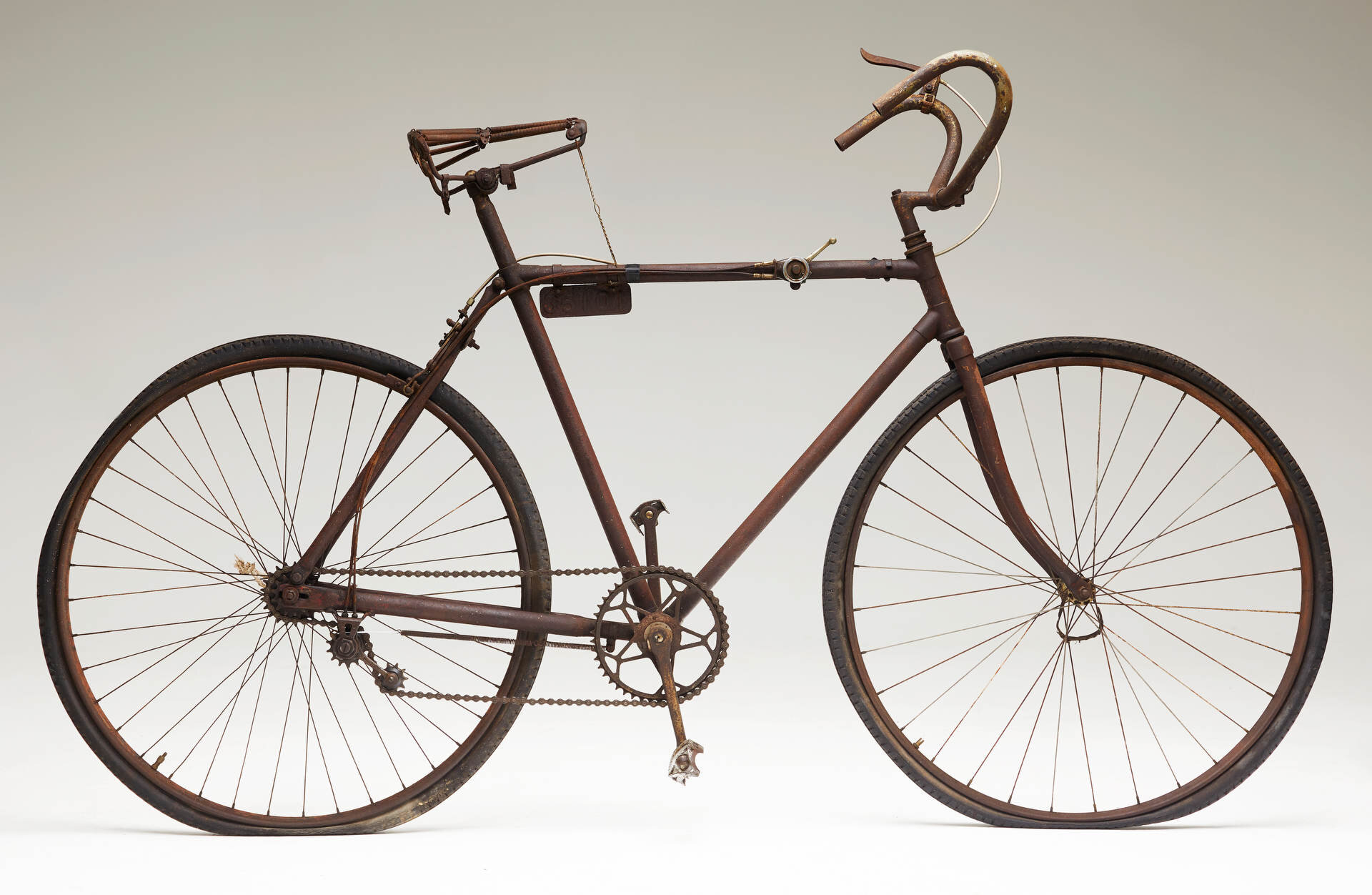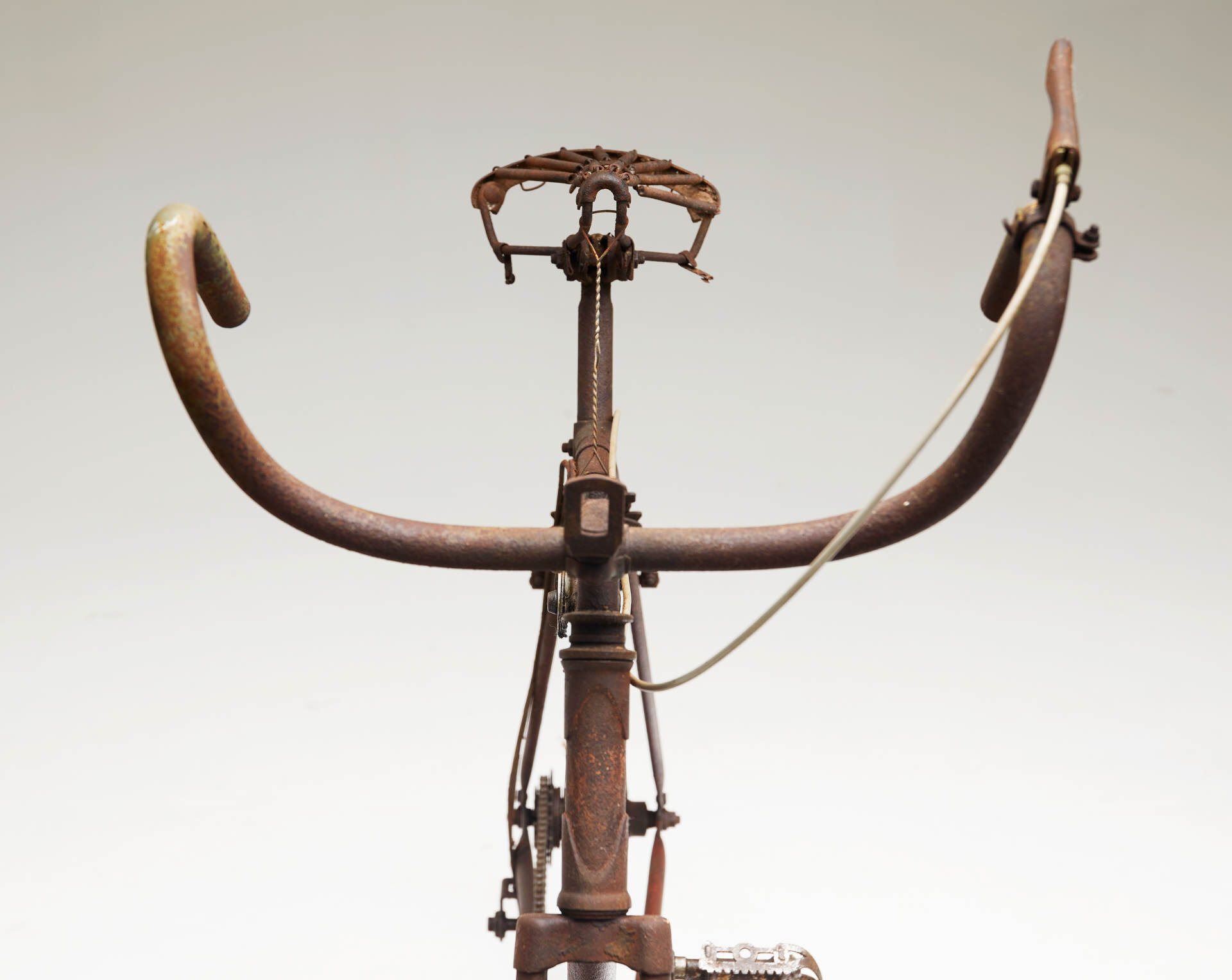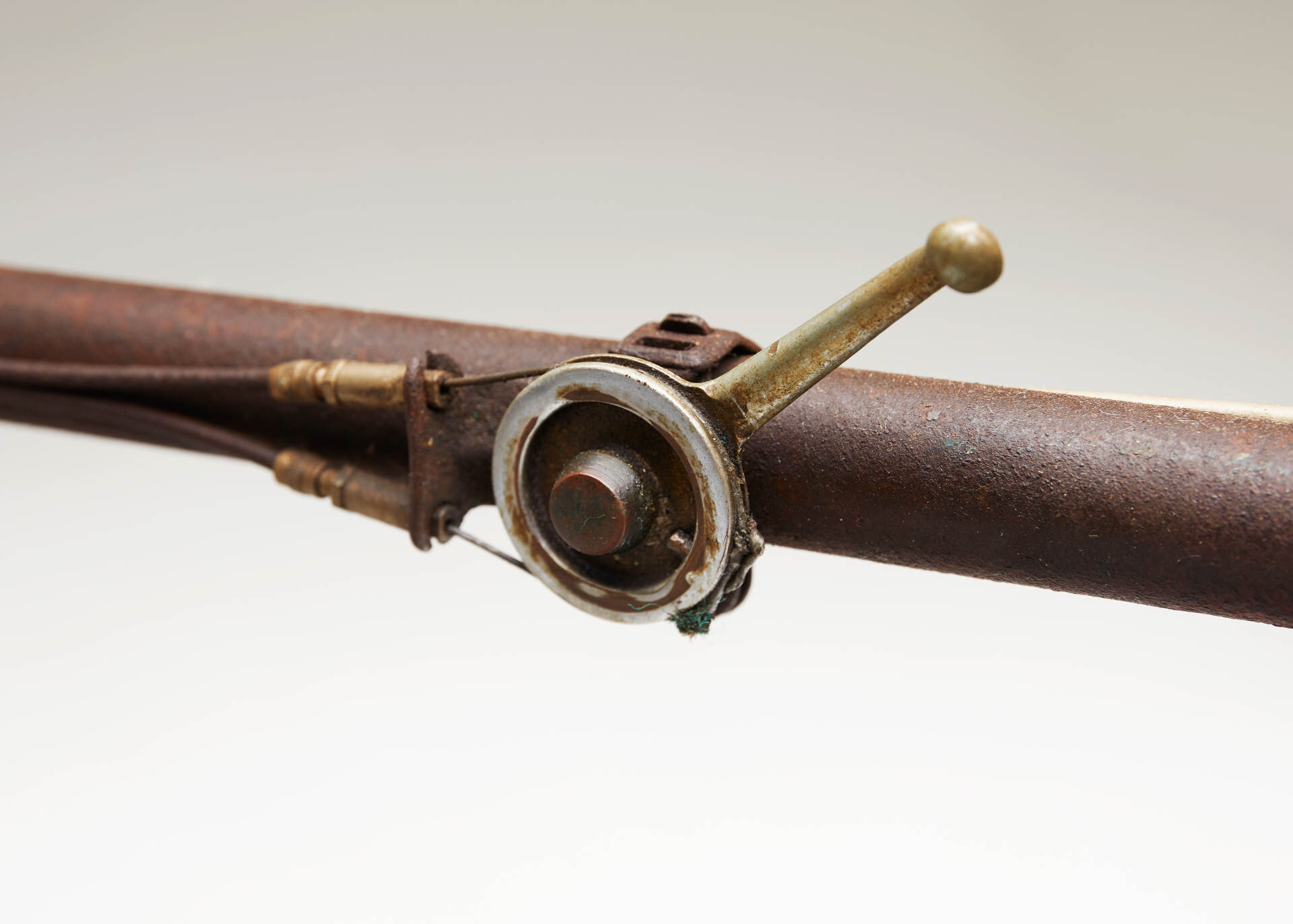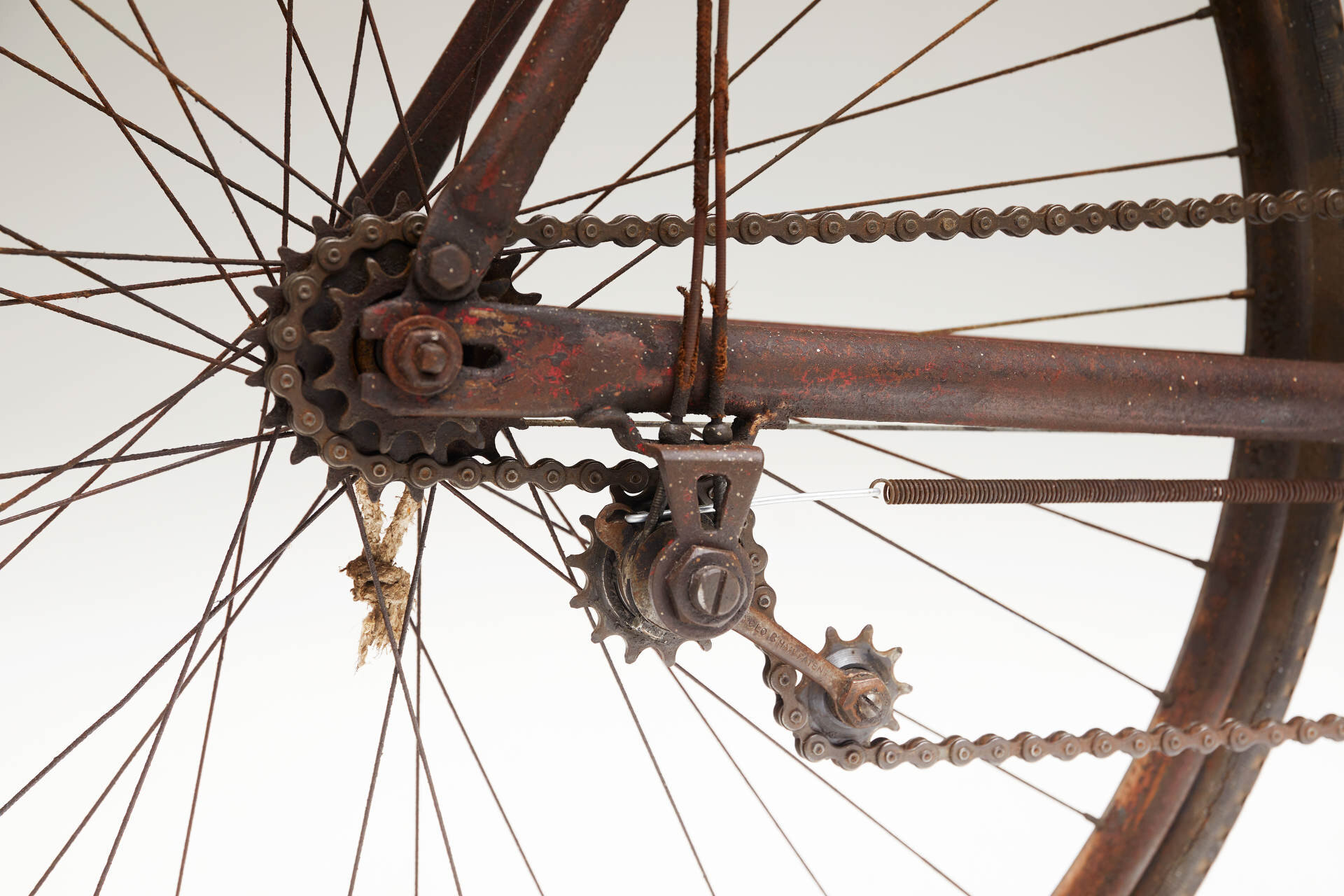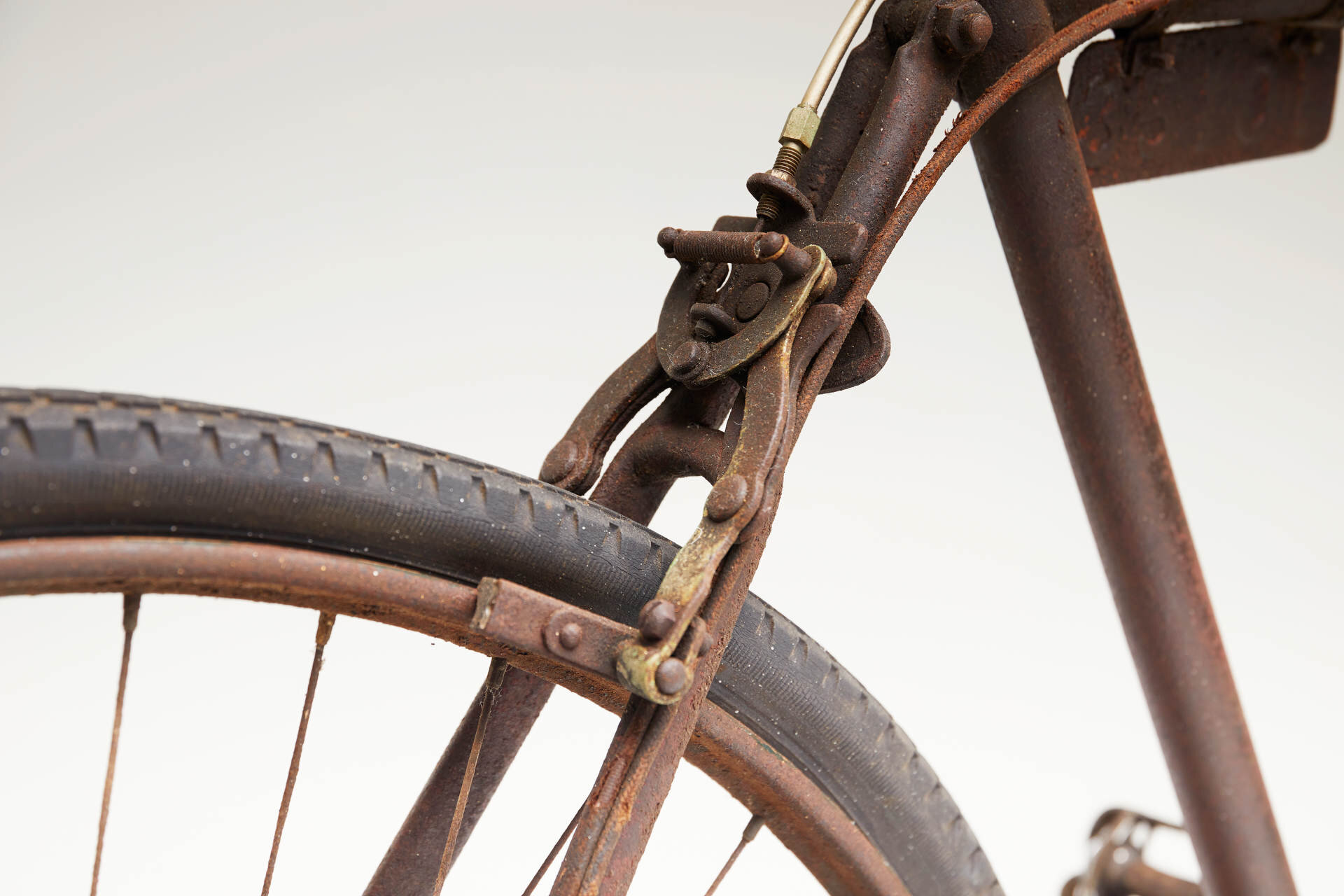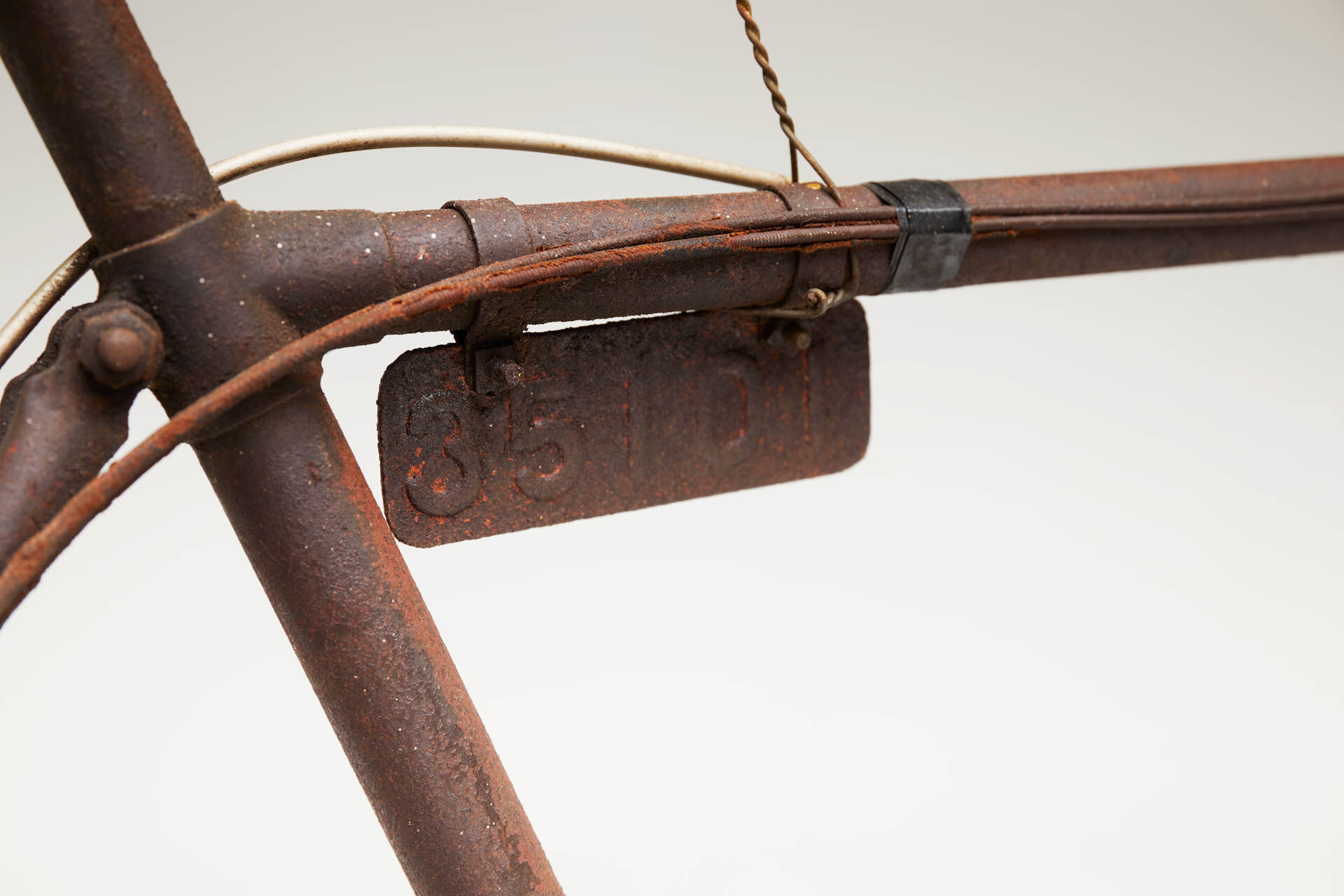The Bikes
c. 1904
Unknown provenance but possibly an Armstrong made in Perth, Western Australia or Birmingham, UK.
Frame number 9265
Single speed with Westwood rims, New Eadie coaster brake rear hub, Armstrong chainset and Lyotard pedals. Nickel plated stem and bars with John Bull handgrips. Ideale saddle.
This bike was built as a ‘path racer’, the ancestor of the modern racing bike. Path racers were a hybrid design that allowed racing on both tracks and roads, many of which were unpaved.
While preservation os preferred to restoration, the original condition of this bike was poor enough to warrant some restoration of the metal finishes and replacement of the original tyres.
Loaned by Tim Eastwood
1920’s BSA
The Birmingham Small Arms Company (BSA) was a large British industrial company with many divisions. It brought its precision engineering experience to the production and supply of high-quality bicycle components to bike builders around the world.
1908-09 BSA catalogues contain the frame hardware used in the construction of this dedicated track and road racing bike. Bikes built in Australia are generally considered to be 12-24 months younger than the components used in them due to the time spent in transit and storage.
Notable features on this BSA-based bike, much the same as Kaiser’s Beverley-to-Perth bike pictured, include short-wheel base chain-bridge, narrow bottom-bracket shell – for faster pedaling through corners - and lugs resulting in a “lower-than-shearers-bike” bottom-bracket and sloping top-tube. Wheel size was typically 28”. The chain and seat stays are a heavier D-shape and the down-tube and seat-tube were 1 1/8” diameter with a 1” top tube.
In the early 1920’s the next generation of lightweight bikes appeared as represented by the circa 1924 Northam-to-Perth winning “The West” cycle in this exhibition. By comparison, it features 1” tubing with 7/8” top tube, pencil thin seat-stays and rear chain stays made of lightweight narrow fork blade tubing.
By 1930, most builders settled on standardized 1” tubing throughout the main triangle with brazed on seat-stays. Rear dropouts were lighter with BSA snail-cam chain tighteners all but obsolete. Rounder fork blades were used exclusively and wheel size choice came down to either 700c or - until all but gone in the 1970’s - 27” wheels. Little new or dramatically different or lasting consequence in steel bike design would ever be seen again.
Loaned by Frank West
c. 1935
Frame number 155. This bike was possibly built by West Cycles, however the loss of paint makes it impossible to confirm.
Prior to 1934 many Perth bike builders used pressed metal badges on their bikes’ head tubes. New processes in the mid ‘30’s saw manufacturers quickly adopt decals in preference to badges. There is no evidence of a headbadge on this bike, it’s likely that it dates from the second half of the decade.
The bike is unusual in that it sports a rear derailleur - a Cyclo three speed that was popular on the Continent (Europe) but rare in the backwaters of Perth. The immediate past owner of the bike was ex Nedlands Mayor Colin Barnes.
Loaned by Rory
1953 Manxman Special Manxman Cycles, 140 Broadway, Nedlands
Joe Barron rode this Manxman bicycle to his 1954 Beverley to Perth win.
Hand painted scroll work and water slide transfers. 27” wheels, 22 “ TT x 22 “ ST, Frame No. 35294. Magistroni crankset, Simplex Raidexport 32 rear derailleur (c. 1961) Simplex Juy 56 front derailleur (c.1956), unknown alloy rims sport Dunlop Special Lightweight tyres.
c. 1982 Impala
Bob Currie, original owner of Ideal Cycles in O’Connor, built bikes under the Impala name. He won the 1982 Perth to Beverley on this bike.
The Impala, remarkable for its light weight, is typical of a new breed of race bikes. It was originally fitted exclusively with Shimano’s top of the line Dura Ace groupset. Over time Bob gave parts away to younger riders. The front derailleur lever (left side of the down tube) has at some point been replaced with an older Campagnolo lever, reason unknown.




























